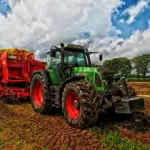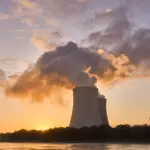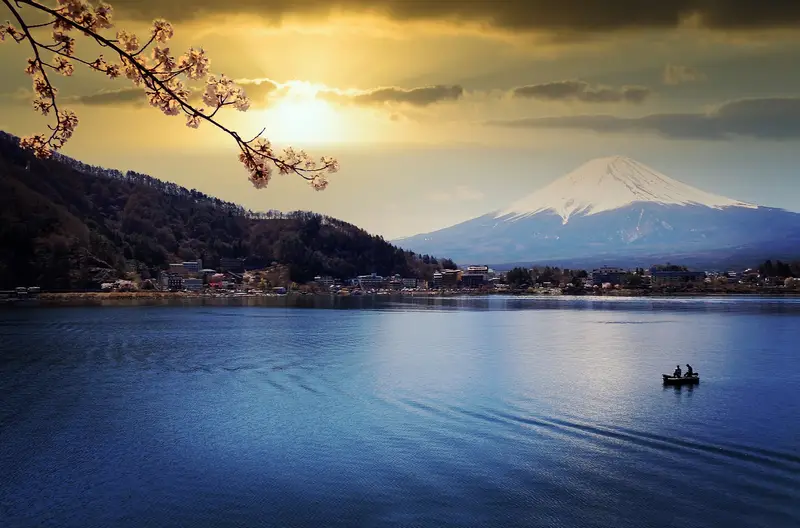
If you live in a country where volcanos are present, or if you are thinking about moving to a place where volcanoes are found, you might be asking about the pros and cons of living near a volcano.
Pros of living near a volcano include amazing scenery, rich fertile soils and cheaper land and homes, whereas the cons include the dangers of living near a volcano including the destruction of homes, risks of earthquakes, larva flows, fires, tsunamis, mud and pyroclastic flows and the risk of death.
Fun facts about people who live near volcanoes:
- 80% of the earth’s surface is of volcanic origin.
- 800 million people live within 99km (62 miles) of an active volcano.
- On Hawaii’s Big Island 3,122 people live within 5km (3 miles) of Kilauea volcano, United States.
- In Japan nearly 5,000 people live within 5km of Sakurajima volcano.
- In The Congo 2,416 people live within 5km of Nyiracongo volcano.
* Source of the above facts is from USGS
I will say I really enjoyed researching this article, and I’m surprised I haven’t done it sooner. Volcanoes have always fascinated me, and I’ve seen a few, including those on the Canary Islands and the larva flows there, the active volcano on the Indonesia Island of Bali, Rotorua in New Zealand and Mount Vesuvius in the Gulf of Naples. The volcanoes on my bucket list are still those in Hawaii. I’ve included a few videos in this article, which I hope you will find as interesting as I did.
Please also read this article to discover how you could save £71,475 on your next mortgage if you sell your house and rent before buying again. Even I was amazed when I did the calculations! The strategies you learn in this article will not only save you money, but it will also reduce the stress of buying your next house.

What are the pros of living near a volcano?
- Amazing views and scenery: With volcanoes comes great scenery, and there’s no doubt that an erupting volcano is an amazing sight you can’t take your eyes from (see videos below). An advancing larva flow is relentless and is one of natures unstoppable forces, but one that is a fascinating watch for tourists. You might say that a volcano and the disruption it can cause is the price to pay for living in paradises like Hawaii.
- Rich fertile soils: The advantage of the soils around volcanoes is they are very fertile and makes for good farmland. Volcanoes deposit enriched minerals such as magnesium and potassium, which is released as the volcanic rock and ash weathers to produce extremely fertile soils. The thin layer of ash from a volcanic eruption acts as a natural fertiliser, which often produces an increased harvest in the years after an eruption. This means that the soil near active volcanoes is often rich in mineral deposits and provides excellent farming opportunities.
- Great for tourism: Many tourists love to visit volcanoes each year with the advantage that jobs are created, including tour guides and jobs created at nearby hotels, restaurants and gift shops. One such region that is extremely popular for its volcanic activity is Yellowstone National Park, USA, Mount Fuji in Japan in Fuji National Park which is visited by up to 100 million tourists each year and geothermic places like Rotorua in New Zealand.
- Geothermal energy source: Geothermal energy from a volcano is a benefit for the local economy as it provides power for nearby communities.
- Mining of minerals and diamonds: Another advantage to the local economy is that volcanic activity produces minerals such as sulphur, which is used in batteries, detergents, fungicides, manufacture of fertilizers, gun power, matches and fireworks. Volcanic activity also produces precious stones like diamonds and mud that is used for skin care. Both the minerals and precious stones benefit the local residents, as jobs are created for those who live near volcanoes.
- Spiritual and connection: The native islanders of Hawaii see the presence of volcanos and the volcanic activity as a connection with nature which has a spirituality about it (see video below from Vice News).
- Cheaper homes: Living on Hawaii is expensive, as it has the highest median home price in the US of around $700,000**. But one of the benefits of land near volcanic activity in places like Pahoa and Puna in Hawaii is that it’s cheap. Living near to the threat of a fiery destruction isn’t great for the real estate market in these areas, and living there is risky.
** Source is Redfin.
“PAHOA, Hawaii — Jaris Dreaming built his spacious, solar-powered home in a clearing of Polynesian jungle. He drinks rainwater caught from the sky and eats avocados from trees in his backyard. Mainlanders express envy when they hear how he bought nearly 100 acres of Hawaii’s Big Island for just over $100,000.
But there’s a catch to this off-grid paradise: Dreaming lives a short stroll from a lava-spewing rift of Kilauea, one of the world’s most active volcanoes.
The growing ferocity this month of Kilauea’s eruptions, which are burying home after home under rivers of molten rock, has provoked questions about how thousands of families managed to put down stakes in such a disaster-prone domain in the first place.“
Hawaii’s volcano country, where land is cheap and the living is risky – The Seattle Times
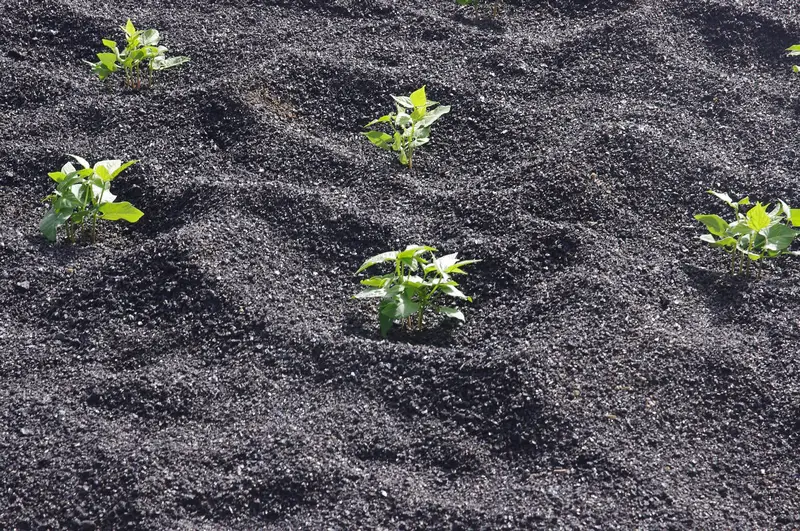
The top 5 reasons to live near a volcano
From the above pros of living near a volcano, the top 5 reasons to live near a volcano are:
- Fertile soils for good farming and higher crop yields.
- The geothermic and volcanic activity is a tourist attraction.
- The nearby land is rich in minerals like sulphur used in industry.
- The geothermic energy can be harnessed to generate power.
- Cheaper homes and land in the danger zone near to active volcanoes.
America’s Most Dangerous Volcano Is Erupting Again
This video from Vice News and narrated by Katie Tutrone is worth a watch. This video shows why people love to live near to volcanos, despite the dangers and destruction they can cause, which in this case is on Big Island Hawaii and near to Kilauea volcano.
In this video you see that the residents of Hawaii see that living with larva is just a part of life and something to coexist with. A very positive look at living near a volcano.
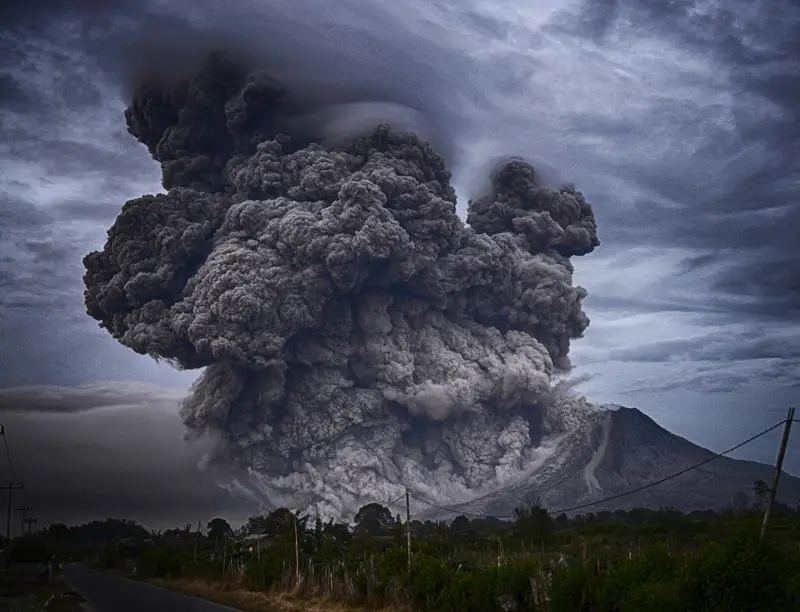
What are the cons of living near a volcano?
- Earthquakes: A major disadvantage of living near volcanoes is that where you have volcanos you get earthquakes too. Earthquakes alone can be very destructive to homes near a volcano, which is in addition to the risks of the other volcanic activity like larva flows.
- The risk of homes being destroyed: One of the biggest risks of living near a volcano is that your home may be destroyed by a larva flow. The good thing about larva flows is they tend to move very slowly, which gives residents time to move out before they are in any danger. But in the video below you see that a resident of La Palma, in the Canary Islands in Spain is very unhappy with the authorities at the lack of notice for him have to evacuate his home.
- Destruction of roads: Larva flows will destroy anything in its path, which includes roads leading to communities. It takes time to remove the cooled larva and to reconstruct roads for residents who are fortunate enough to not lose their home in the larva flow.
- Loss of power and water: The larva flows will destroy power cables and water pipes, as will fissures that open up around volcanic activity, which will affect the homes nearby.
- Being homeless: There’s a real risk of becoming homeless if your house is built near an active volcano in places like the Canary Islands, Hawaii, La Soufrière volcano on the Caribbean island of St. Vincent and near Iceland’s volcanos. The disadvantage of living near a volcano is you may have to leave your home at a moment’s notice due to an eruption.
- Risk of death from an eruption: There is a real danger for anyone who lives near a volcano of getting killed by volcanic activity. This includes the risk of fissures opening up under your home, the risk of larva engulfing you and your home, the risk of pyroclastic flows, earthquakes, tsunamis, mud flows (lahars), fires, poisonous gasses and carbon dioxide poisoning. For example; lives were lost in 1868 and 1975 after land slips on Kilauea’s south flank in Hawaii that resulted from earthquakes.
- Ash clouds can suffocate: When volcanos erupt they often thrust huge clouds of ash into the air, which can suffocate those who live near to the volcano. But the volcanic ash can travel far and wide, for example I was speaking with the locals in Barbados who suffered terribly from the ash clouds that were generated by the volcanic eruption on St. Vincent in 2021, which is just under 200 kilometres (125 miles) from Barbados. At times the residents of Barbados could hardly see a few feet in front of them due to the ash dust that descended on Barbados.
- Tsunamis risk: Living near volcanos carries a serious tsunami risk too. But this is also one of the bigger risks for those who don’t necessarily live near to the volcano itself. For example, there is a potential risks to the east coast of America from the island of La Palma in the Canary Islands (New York to La Palma is 5,174 km or 3,234 miles). La Palma is at risk of undergoing a large landslide or a “flank collapse“, which could cause a mega tsunami in the Atlantic Ocean, which could destroy homes along the east coast of America.
- Land movement: The land near to volcanos is at risk of shifting before, during and after a volcanic eruption, which is extremely hazardous. Land can shift either up or drop down and can be caused by either larva flows or from earthquakes.
- Volcanic fissures: Volcanic fissures can occur when magma flows up through cracks in the ground and leaks out onto the surface. Fissures tend to occur as a result of plate movement which causes large fractures in the earth’s crust and can occur around the base of a volcano and also miles from the volcano itself, as can be seen in one of the videos below.
- Collapsing land to creating craters: Land around an active volcano can become very unstable as larva flows out from larva lakes. Often times the larva is what is supporting the land above it, but when the larva has gone, the land can collapse and form large craters (See Scott Manley’s video below).
- The risk of pyroclastic flows: With some volcanos there is a risk of pyroclastic flows, which are dense destructive masses of very hot ash, lava fragments, and gases that are ejected explosively from a volcano resulting from a collapsing flow front (see video below). Pyroclastic flows usually flow at great speed, which can be as fast as 700kmh (440mph), and it is this high speed when it is combined with the high temperatures (200-980°C or 400-1,800°F) of the flow material that makes pyroclastic flows so dangerous. If you’ve not seen the movie Dante’s Peak with Pierce Bronson, you should watch it, as this includes a pyroclastic flow.
- Mud flows (Lahars): Mud flows from volcanoes which are known as Lahars are violent mud flows that are composed from of a mixture of pyroclastic material, rocky debris and water. This combined slurry of material usually flows down from a volcano, typically along a river valley, destroying anything in its path. One of the most notable lahars was at Mount Nevado del Ruiz which was responsible for killing thousands of people (see video below of a compilation of Lahars).
- Acid rain: You can get acid rain when the gasses such as sulphur dioxide get released into the air from violent volcanic eruptions and get dissolved into the rain.
- Poisonous gasses: The volcanic gases that pose the greatest hazards to residents living near volcanoes are sulphur dioxide, carbon dioxide, and hydrogen fluoride.
- Carbon dioxide poisoning: Carbon dioxide is an odourless gas, and as a result is one of the most dangerous gasses emitted from volcanos, as nearby residents cannot smell this deadly gas when it’s released from a volcano.
- Disruption to flights and holidays: Volcanic ash can affect flights to and from a country affected by ash clouds. But these volcanic ash clouds don’t only affect flights and holidays near a volcano, as these ash clouds can travel for miles from the volcano. For example, the UK and Europe were affected by the ash clouds generated by the erupting volcano in Iceland. The same was true of flights to and from Barbados, as a result of the volcano eruption on St. Vincent in 2021.
- Destruction of businesses: Local businesses in the path of larva flows, pyroclastic flows or that happen to be located where a volcanic fissure opens up can be destroyed. This is what happened to a nursery that were specialists in growing and selling carnivorous plants. This plant business was right underneath where volcanic fissure 8 opened up on Big Island.
- Fires: Volcanic activity causes house fires and forest fires in the area that surrounds the volcano that are in the path of larva and pyroclastic flows.
- Loss of crops: The disadvantage to farmers who live near volcanoes is they are at risk of losing their crops due to larva flows, pyroclastic flows and from fires that result from volcanic activity.
- Floods: Volcanic activity causes mud flows, pyroclastic flows, land shifts and slides, which can all lead to serious flooding of homes in the area.
- Living in fear: A major disadvantage for people who live near volcanoes is that many live in fear for their lives, their livelihoods and fear the loss of their homes.
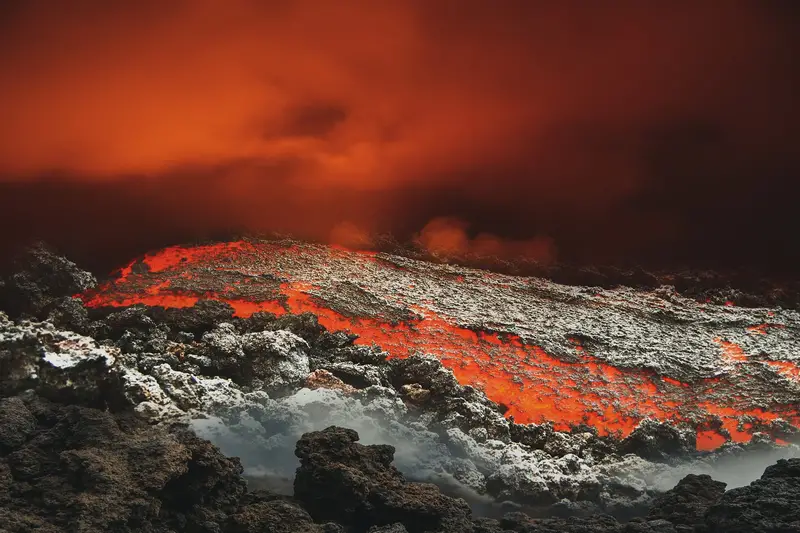
Top 5 reasons to not live near a volcano
From the above cons of living near a volcano, the top 5 reasons not to live near a volcano are:
- Risk of your home being destroyed by larva flows.
- Risk of being killed from the volcanic activity.
- High pyroclastic flow risk.
- Earthquakes.
- A higher tsunamis risk.
Larva from Canary Island La Palma volcano engulfs homes in village
A further video of the same larva flows in La Palma in the Canary Islands:
When a Volcano Erupts Under Your Neighbour’s House: Visiting the site of Hawaii’s 2018 Eruption
This is an extremely interesting video about volcanic activity from Kilauea on Hawaii’s Big Island by Scott Manley. This volcanic activity caused earthquakes and new sets of volcanic fissures that opened up under the neighbourhood of Leilani Estates.
Dome collapse and pyroclastic flow at Unzen Volcano
Mount Unzen was also responsible for killing around 15,000 people after a landslide that caused a 55m (180ft) wave in Kyushu, Japan.
Lahars Compilation Deadly Canic Phenomenon
Some of the people who filmed these Lahars are standing too close for comfort. Also, some of the cinematography is poor, but the effect is still the same.
Why do people live near volcanoes?
People live near volcanoes because the soils are fertile and good for farming, the volcanic activity provides geothermal energy that’s harnessed heating homes, whilst others embrace the connection with one of nature’s greatest forces. But many people live near active volcanoes as the land is cheap.
What are the benefits of living near a volcano in economy?
The biggest economic benefit of living near a volcano is the volcanic rock and ash creates fertile soils that’s great for farmers who get higher crop yields. Another economic benefit is the tourist industry, as the geothermic and volcanic activity brings tourists and money to hotels and restaurants.
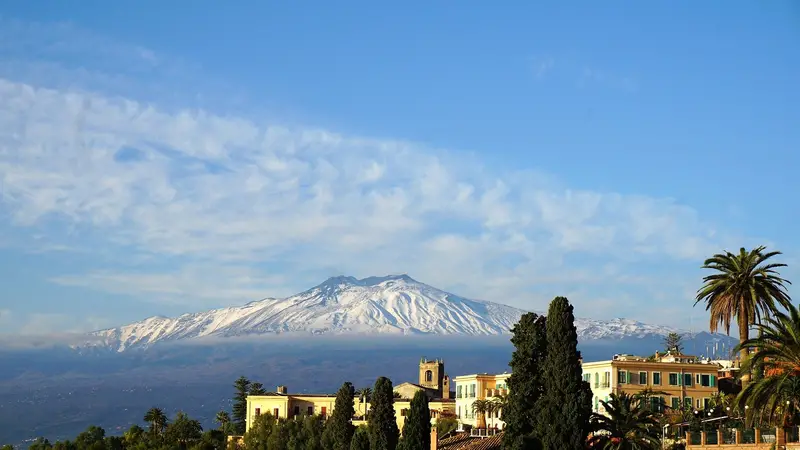
Final thoughts about the pros and cons of living near a volcano
You don’t necessarily need to live near a volcano to be at risk of being affected by volcanic activity. For example I explained how Barbados residents were affected by the volcanic eruptions on St. Vincent in the Caribbean, which is nearly 200km (125 miles) away.
Some of the most devastating effects for those who live further from volcanoes is when the activity leads to tsunamis. For example:
- Anak Krakatoa caused a volcanic landslide that resulted in a tsunami and killed 437 people in 2018.
- A volcanic landside from Ritter Island, Papua New Guinea caused a tsunami that destroyed many homes.
- In 1980 there was a 250m (820 ft) high wave caused by a volcanic landslide into Spirit Lake from Mount St. Helens Washington, United States.
But it’s not only the volcanoes we can see above ground that affect where we live, as there were 75m (246 ft) waves caused by an underwater eruption of carbon dioxide in Lake Nyos in the Northwest Region of Cameroon.
Please don’t forget to read this before you leave…
Please don’t forget to also read this article to discover how you could save £71,475 on your next mortgage if you sell your house and rent before buying again. As I said earlier, even I was amazed when I did the calculations! Learn about how you will reduce the stress of moving house, whilst at the same time potentially save thousands in the process!
I hope you’ve enjoyed this article about the pros and cons of living near a volcano
If you’ve enjoyed this article about “the pros and cons of living near a volcano” please share it on your favourite social media site.
Also, if you have any questions, please feel free to comment below too. Please also share any of your experiences with properties you’ve bought. Alternatively, if you need more help, please feel free to contact us on our contact us page here. Or join the discussion and ask your question in the property forum.


